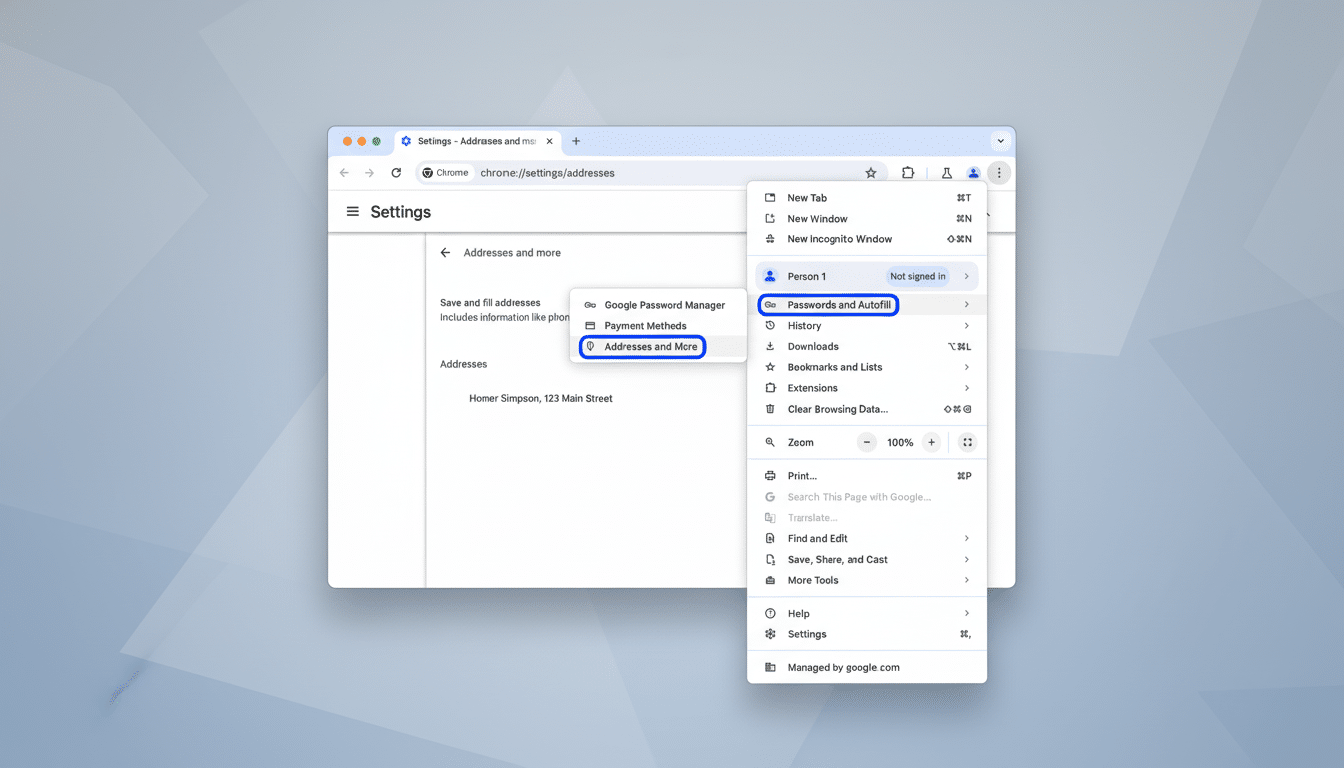Google is bringing Chrome’s autofill experience to government IDs, starting with support for four identification cards: passport numbers, driver’s license numbers, national identification numbers and other such forms of identification. The update is available as part of an “enhanced autofill” experience that Google hopes will help eliminate friction on complex forms, while keeping saved data secure.
What’s New In Chrome Autofill for ID Documents
In addition to addresses, passwords, and payment methods, Chrome can now fill in some key identity fields — names, email addresses, phone numbers — when users have requested them on certain web pages. According to Google, the browser has been trained to do a better job of comprehending diverse form layouts — for example, country-specific passport layouts or state-specific license fields — so that it can more precisely map your saved information.
- What’s New In Chrome Autofill for ID Documents
- How To Switch On The Feature in Chrome Settings
- Security And Privacy Considerations for ID Autofill
- How This Matters for Common Online Tasks
- Work And School Controls for Managed Chrome Use
- Best Practices And Real-World Examples for IDs
- What To Watch Next as Chrome Rolls Out Updates

The aim is simple: to cut down on repetitive typing, prevent form errors and speed up checkouts or applications that once required digging out documents. In practical terms, this can mean bringing up a booking site and being able to just drop in a passport number, or renewing your vehicle registration without re-entering driver’s license information.
How To Switch On The Feature in Chrome Settings
The ID-saving option is part of the Enhanced Autofill feature, which you’ll need to enable in Chrome’s settings. Open the three-dot menu, tap Settings and then select Autofill and Passwords. From there, turn on Enhanced Autofill and check off what kinds of things you want Chrome to remember. You can cancel at any time by turning the setting off or deleting individual saved entries.
- If you have Chrome sync enabled, your Autofill data can be synced across signed-in devices.
- For even more control, you can create a custom sync passphrase to enable end-to-end encryption for all the data that gets synced, storing it on Google’s servers in an unreadable form.
- If you don’t use sync, data remains local to the device.
Security And Privacy Considerations for ID Autofill
Google said that autofill data was encrypted in transit and at rest, and that users always have the final say on what is saved. Still, some security experts recommended caution with more sensitive identifiers. Groups like the Electronic Frontier Foundation have long counseled that users weigh convenience against potential exposure risk, especially on shared or unmanaged computers.
Good hygiene still counts: lock down your device, don’t save personal keys (your ID PII) on public or shared computers, and think about a sync passphrase when you’re saving ID data across devices. And remember that, by default, Incognito mode won’t store browsing data, and Chrome lets you force re-authentication (for example with device biometrics) before showing sensitive content in a few places.
How This Matters for Common Online Tasks
Once filled out, forms for travel and transportation tend to be the most cumbersome parts of online checkouts because they require exact matches with official documents. By collecting IDs on hand, Chrome can reduce copy-paste errors and accelerate through booking flows. The Baymard Institute estimates that online cart abandonment is close to 70%, and form friction is often a cause of problems; better autofill means fewer fields for users to fill out, which in turn can mean a lower rate of errors.

The potential impact is broad. StatCounter puts Chrome’s share of global desktop browser usage at about 65%, so even small tweaks to its usability can have an outsized impact across billions of transactions and applications. Developers gain too as forms that follow standard autocomplete attributes and clear labeling better match Chrome’s suggestions, increasing completion rates without significant redesigns.
Work And School Controls for Managed Chrome Use
Enterprises and schools with Chrome management can control autofill using admin policies, such as disallowing certain types of data to be saved or suggested. Those controls allow regulated organizations to comply with internal data handling rules and sector-specific obligations, while still giving users the productivity benefits of autofill for less sensitive fields.
Best Practices And Real-World Examples for IDs
Booking an international flight usually demands a passport number, expiry date and issuing country. With advanced autofill in place, those fields can get filled automatically, leaving you to check and click. Car rental and insurance sites routinely request driver’s license numbers and vehicle identification numbers, so storing them there spares you from rummaging through glove compartments or photo albums.
For extra security, periodically as a matter of routine, audit your saved autofill entries. Strip out old passports and expired licenses so you don’t make a mistake, and put your current documents in the right format. If more than one person in your household uses the device, create different Chrome profiles to avoid everyone’s personal IDs from commingling.
What To Watch Next as Chrome Rolls Out Updates
Autofill updates are usually released incrementally to desktop and mobile users first, with some regional variation due to local document formatting tendencies. Expect refinement as Chrome encounters more real-world forms — in particular government sites with non-standard field names — and as site owners embrace the clearer markup that gets good behavior from browser autofill.
For now, the update that will be brought about by enhanced autofill’s remembrance of passports and licenses is a significant change: it means that the browser can actually participate in official identity flows, not just convenient ones. When used responsibly, it can save you time and minimize errors — without surrendering control of your most sensitive information.

